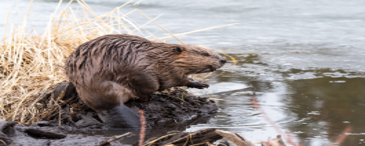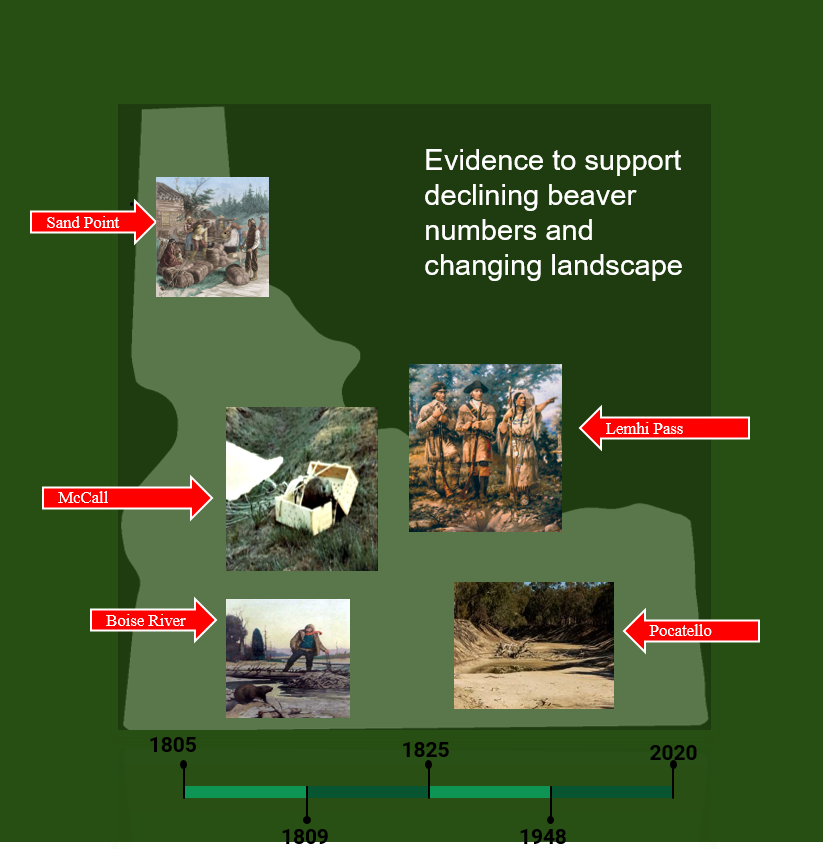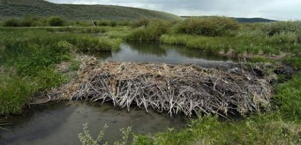Nick Hougaard, Katelyn Thom, Dr. Emily Wakild

Background

Beavers have played a key role in shaping the landscape of Idaho. Through research the effects that this keystone species can be seen throughout the history of Idaho. With the near extinction of the beaver in the early 1800s, the landscape of Idaho has dried up and has made it unrecognizable to how it previously was.
Data and Results

1805, Lemhi Pass
Lewis and Clark first set foot in Idaho, paving the way for fur trappers in search of beaver pelts.
1809, Sand Point
First beaver trading post in Idaho, reported large quantity of beaver. 130 beavers traded to Native Americans
1825, Boise River
5000 beavers are trapped in just over one year. Idaho Fur trade in at its highest. Start to see major decline in Beaver numbers and water levels decline.
1948, McCall
Beavers are being reintroduced in Idaho, beavers are being air dropped across idaho.
2020, Pocatello
Research conducted on rivers water levels sees strong correlation between the declining beaver population and lower. water tables.
Methods

It has been revealed that the beaver history in Idaho is difficult to find. Most of the historical data lacks certain aspects that are relevant to our research question, particularly in addressing the causes of the decline of the beaver population between the 19th and 20th centuries and how it has impacted the land and its inhabitants. The area of focus would be narrowed between these points in the timeline which would follow closely to events of the fur trade.
Conclusion
With the declining beaver numbers in Idaho, we have seen a dramatic change of Idaho’s landscape. In the early 1800’s Idaho’s geography was very different then how we know it as today, the evidence of this can be found all over if you know where to look. From in the past through journal entries of trappers to modern day times of studying the declining water levels, the evidence is there and it clearly has to do with the beaver populations in this state.
Sources
(Goldfarb, 2018). (O’Connell, 2020).(Medin et al. 1991). (Defenbach, pg. 138).(Leege, pg. 973) .(Brosnan, pg. 66).
Additional Information
For questions or comments about this research, contact Nick Hougaard at nickhougaard@u.boisestate.edu.